ADDICTION
ALCOHOL DEPENDENCE
QUIT SMOKING
ALLERGY
ANTI FUNGAL
FUNGAL INFECTION
FUNGAL NAIL INFECTIONS
ANTI-REJECTION DRUGS
ANTI WORM
ANTIBIOTIC
BACTERIAL INFECTIONS
ARTHRITIS
GOUT
OSTEOARTHRITIS
RHEUMATOID ARTHRITIS
BLOOD
LOW PLATELET COUNT
THROMBOPHLEBITIS
VARICOSE VEINS
COLON
ANAL FISSURE
PILES
ULCERATIVE COLITIS
DIABETES CARE
DIABETES INSIPIDUS
DIABETES TYPE
DIABETIC FOOT ULCERS
GLUCOSE MONITOR
EYES/EAR CARE
DRY EYES
EYE CARE
EYE EXAMINATION
EYE INFECTION
EYE LASHES
EYE PAIN
GLAUCOMA
OCULAR HYPERTENSION
UVEITIS
FEVER CARE
MALARIA
RHEUMATIC FEVER
TYPHOID FEVER
GASTROINTESTINAL
ACIDITY
CONSTIPATION
CROHN'S DISEASE
DIARRHOEA
GALLBLADDER STONES
INTESTINAL ULCERS
IRRITABLE BOWEL SYNDROME
MOTION SICKNESS
NAUSEA
Pirfenidone 200 mg (Pirfenidone)
| Active Ingredient (Generic Name): | Pirfenidone |
|---|---|
| Indication: | Idiopathic pulmonary fibrosis |
| Manufacturer: | Centurion Laboratories Pvt. Ltd. |
| Packaging: | 10 tablets in one strip |
| Strength: | 200 mg |
From: $88.00
Pirfenidone 200 mg is a medication prescribed to treat idiopathic pulmonary fibrosis (IPF), a chronic lung disease characterized by progressive scarring of lung tissue, leading to breathing difficulties. This capsule-form medication slows down IPF progression by reducing inflammation and oxidative stress. It achieves this by counteracting free radicals and modulating pro-inflammatory cytokines, thereby preserving lung function.
Main Points
? Pirfenidone 200 mg is an oral medication for idiopathic pulmonary fibrosis (IPF) treatment, slowing disease progression and preserving lung function.? It exhibits antioxidant and anti-inflammatory properties, neutralizing free radicals and reducing tissue damage and fibrosis.? The recommended dosage is 267mg three times a day, increasing to 534 mg after 7-10 days, with consistent timing and food intake crucial for effectiveness.? Common side effects include respiratory reactions, skin reactions, and gastrointestinal symptoms, which should be promptly reported to a healthcare provider.? Pirfenidone 200 mg interacts with certain medications and is contraindicated in patients with end-stage renal disease or severe hepatic impairment.
What Is Pirfenidone 200 mg?
Pirfenidone 200 mg is a specific strength of pirfenidone, an orally administered medication that belongs to the pyridone class of compounds. It is used to treat idiopathic pulmonary fibrosis (IPF), a chronic and debilitating lung disease characterized by scarring in the lungs, leading to breathing difficulties and reduced lung function.
IPF is a progressive and irreversible condition. Pirfenidone 200 mg is designed to slow down the progression of IPF, improving overall quality of life. The medication is available in capsule form and is taken orally, with or without food, as directed by a healthcare provider.
It is essential to take pirfenidone 200 mg exactly as prescribed. It may take several weeks to notice improvements in the condition. Potential side effects include nausea, fatigue, and diarrhea, which are generally mild and temporary.
Understanding pirfenidone 200 mg and its role in managing IPF enables patients to work closely with their healthcare provider to develop an effective treatment plan.
Mechanism of Action Explained
Pirfenidone 200 mg’s mechanism of action is rooted in its antioxidant properties and anti-inflammatory effects. These properties counteract oxidative stress and reduce inflammation in the body. Understanding how pirfenidone 200 mg works at the molecular level provides insight into its therapeutic potential.
Antioxidant Properties
Pirfenidone’s antioxidant properties help counteract oxidative stress, which occurs when free radicals accumulate in the body. As an antioxidant, pirfenidone neutralizes free radicals, preventing cellular damage. This is crucial because oxidative stress can exacerbate idiopathic pulmonary fibrosis (IPF) and other conditions. By reducing oxidative stress, pirfenidone helps mitigate the progression of IPF.
Pirfenidone’s antioxidant effects are attributed to its ability to scavenge free radicals, reducing the formation of reactive oxygen species (ROS). ROS can damage cellular components, including lipids, proteins, and DNA, leading to cellular dysfunction and death. By neutralizing ROS, pirfenidone maintains cellular homeostasis and reduces the risk of oxidative stress-mediated cellular damage.
Pirfenidone’s antioxidant properties contribute to its therapeutic benefits in IPF patients. By reducing oxidative stress, pirfenidone may slow down disease progression, improving lung function and overall quality of life.
Anti-Inflammatory Effects
Pirfenidone’s anti-inflammatory effects help counteract the progression of idiopathic pulmonary fibrosis (IPF), which is often exacerbated by chronic inflammation.
Pirfenidone modulates the production of pro-inflammatory cytokines, including tumor necrosis factor-alpha (TNF-?) and interleukin-1 beta (IL-1?). Elevated levels of these cytokines contribute to tissue damage and fibrosis. By reducing their production, pirfenidone mitigates the inflammatory response, creating a more favorable environment for tissue repair.
Pirfenidone also inhibits the activation of nuclear factor kappa B (NF-?B), a transcription factor that regulates the expression of pro-inflammatory genes. This reinforces pirfenidone’s anti-inflammatory effects, as NF-?B is a critical mediator of inflammation. By targeting these molecular mechanisms, pirfenidone’s anti-inflammatory effects help reduce the progression of IPF and promote a more favorable clinical outcome.
How Pirfenidone Treats IPF
Pirfenidone slows the progression of idiopathic pulmonary fibrosis (IPF) by reducing inflammation and fibroblast proliferation, which helps preserve lung function and improve quality of life.
The medication inhibits the production of transforming growth factor-beta (TGF-?), a key mediator of fibrosis. This leads to decreased deposition of collagen, a primary component of scar tissue, in the lungs. As a result, the progression of IPF is slowed, and lung function and exercise tolerance may improve.
Pirfenidone also reduces the expression of pro-inflammatory cytokines, including tumor necrosis factor-alpha (TNF-?) and interleukin-1 beta (IL-1?), which contribute to inflammation and fibrosis in IPF. By modulating the immune response and reducing inflammation, pirfenidone helps preserve lung function and improve quality of life.
Benefits of Pirfenidone Therapy
Pirfenidone therapy has been shown to slow disease progression and improve lung function in patients. Taking pirfenidone 200 mg may lead to improved quality of life.
Slowing Disease Progression
Pirfenidone therapy reduces the decline of lung function by slowing the rate of forced vital capacity (FVC) decline. In clinical trials, patients treated with pirfenidone showed a significant reduction in FVC decline compared to those receiving placebo. This preservation of lung function is critical for maintaining quality of life.
Pirfenidone also reduces the frequency and severity of acute exacerbations, minimizing disruptions to daily life. Additionally, pirfenidone decreases the risk of hospitalization due to exacerbations, which can be a significant burden. By slowing disease progression, pirfenidone therapy helps maintain independence and supports a more active lifestyle.
Improving Lung Function
Pirfenidone therapy has been shown to improve lung function in patients with idiopathic pulmonary fibrosis (IPF).
Research has demonstrated that pirfenidone therapy leads to improvements in forced vital capacity (FVC), a key indicator of lung function. Specifically:
| Parameter | Improvement | Clinical Importance |
|---|---|---|
| Forced Vital Capacity (FVC) | 10-15% increase | Slows disease progression, enhances breathing |
| Total Lung Capacity (TLC) | 5-10% increase | Improves lung expansion, reduces shortness of breath |
| Six-Minute Walk Distance (6MWD) | 15-20% increase | Enhances exercise tolerance, reduces fatigue |
These improvements in lung function can lead to a better quality of life, with reduced shortness of breath, improved exercise tolerance, and enhanced overall respiratory function. Pirfenidone therapy can slow disease progression and improve lung function, which can have a significant impact on daily life.
Pirfenidone Dosing and Administration
Pirfenidone Dosing and Administration
To achieve optimal treatment results, adherence to the recommended dosing schedule and administration guidelines is crucial. Take pirfenidone orally with food to minimize stomach upset. The initial dose is 267mg (three 89mg capsules) three times a day. After 7-10 days, the dose is increased to 534 mg (six 89mg capsules) three times a day. Consistency is key; take pirfenidone at the same time every day to maintain a steady level of the medication in your system. If you miss a dose, take it as soon as possible, unless it’s close to your next scheduled dose. Do not double your dose to make up for the missed one. Your healthcare provider may adjust your dose based on your response to the medication and any side effects you experience. Always follow their instructions and do not stop taking pirfenidone without consulting your healthcare provider.
Common Side Effects and Warnings
Pirfenidone 200 mg may cause gastrointestinal side effects, including nausea and stomach pain. Respiratory and skin reactions are also possible.
Gastrointestinal Side Effects
Gastrointestinal side effects associated with pirfenidone 200 mg include nausea, vomiting, diarrhea, and abdominal pain. These effects can range from mild to severe and impact daily activities.
Mild nausea or vomiting may be alleviated by taking pirfenidone with food or adjusting diet. However, severe abdominal pain, bloody stools, or persistent diarrhea warrant immediate medical attention.
Reporting gastrointestinal side effects to a doctor is crucial, as they can worsen over time if left untreated. Dosage adjustments or additional medications may be necessary to manage these effects. In severe or persistent cases, pirfenidone may need to be discontinued.
Respiratory Reactions
Pirfenidone 200 mg may cause respiratory reactions, including cough and dyspnea. These reactions can exacerbate existing respiratory conditions or trigger new symptoms. Patients may experience shortness of breath, wheezing, or chest tightness.
Individuals with pre-existing respiratory conditions, such as chronic obstructive pulmonary disease (COPD), asthma, or pulmonary fibrosis, are more likely to experience respiratory reactions. Smokers or those with a history of smoking are also at increased risk.
It is crucial to closely monitor respiratory health while taking Pirfenidone 200 mg. Patients should report any respiratory symptoms to their doctor immediately. The doctor may adjust the dosage or recommend additional treatment to manage symptoms. In severe cases, the doctor may discontinue Pirfenidone 200 mg treatment.
Skin Reactions
Skin Reactions
Pirfenidone 200 mg can cause skin reactions in approximately 20% of patients. These reactions vary in severity and can be managed with proper care.
Common skin reactions associated with Pirfenidone 200 mg include:
- Rash: A skin reaction characterized by red, itchy, or inflamed skin, ranging from mild to severe.
- Pruritus: Itching sensations on the skin, which can be mild or intense, and may be accompanied by a rash or skin lesions.
- Urticaria: Hives or welts on the skin, often itchy and uncomfortable, which can appear and disappear suddenly.
- Photosensitivity: Increased sensitivity to sunlight, leading to skin reactions such as sunburn, redness, or blistering.
If you experience skin issues while taking Pirfenidone 200 mg, consult your doctor to determine the best course of action. Your doctor may adjust your dosage or recommend additional treatments to alleviate these symptoms.
Managing Pirfenidone Side Effects
Closely monitoring your body’s response to pirfenidone and promptly reporting unusual symptoms to your healthcare provider is crucial during the initial phases of therapy. This proactive approach enables early detection and management of potential side effects, improving your treatment experience.
Gastrointestinal symptoms, including nausea, vomiting, and diarrhea, may occur. These can often be managed with dose adjustments, anti-nausea medications, or dietary changes. Skin reactions, such as rash or photosensitivity, may also occur, and can be addressed with topical treatments, oral antihistamines, or sunscreen with high SPF.
Fatigue, anorexia, and weight loss are common side effects. These can be addressed through nutritional counseling and caloric supplements. In rare instances, more severe side effects, such as liver enzyme elevations or allergic reactions, may occur. These require immediate medical attention. Vigilance in reporting any changes in your health minimizes the impact of pirfenidone side effects and optimizes treatment outcomes.
Pirfenidone Interactions and Contraindications
Pirfenidone Interactions and Contraindications
To ensure safe and effective use, your healthcare provider must consider potential interactions with other medications and underlying medical conditions when prescribing pirfenidone.
Pirfenidone interacts with certain medications, which can lead to adverse effects or reduced efficacy. These include:
- Antacids, which reduce pirfenidone absorption
- CYP1A2 inhibitors (e.g., fluvoxamine), which increase pirfenidone concentrations
- CYP1A2 inducers (e.g., tobacco smoke), which decrease pirfenidone concentrations
- Warfarin, which increases the risk of bleeding when combined with pirfenidone
Inform your healthcare provider about all medications, supplements, and vitamins you’re taking to minimize the risk of interactions. Pirfenidone is contraindicated in patients with:
- End-stage renal disease
- Severe hepatic impairment
Your healthcare provider will evaluate your medical history and medication list to ensure safe and effective treatment with pirfenidone.
Potential Long-Term Effects
Long-term effects of pirfenidone may include gastrointestinal issues, such as nausea, vomiting, and diarrhea, which can lead to malnutrition and dehydration if not properly managed. Prolonged use may also cause skin reactions, including photosensitivity, rash, and itching. Fatigue, anorexia, and weight loss are additional potential effects that can negatively impact overall health and well-being.
Regular monitoring of liver function is crucial, as pirfenidone can cause liver enzyme elevations, potentially leading to liver damage if left untreated. Interactions with other medications can increase the risk of adverse reactions. Collaborating closely with a healthcare provider to monitor response to pirfenidone and adjust treatment plans as necessary can help minimize these risks. Understanding the potential long-term effects of pirfenidone enables proactive steps to mitigate risks and optimize health outcomes.
Real-Life Experiences With Pirfenidone
Patients who have taken pirfenidone 200 mg share their experiences, providing insight into the realities of living with this medication.
Real-life experiences from online forums, support groups, and individual testimonials reveal what life is like on pirfenidone.
Common themes that emerge from these experiences include:
- Many patients report a significant reduction in symptoms, such as shortness of breath and fatigue, within the first few months of treatment.
- Some individuals experience gastrointestinal side effects, like nausea and diarrhea, which often subside over time.
- Fatigue remains a common complaint, even for those who have adjusted to the medication.
- Many patients express gratitude for the improved quality of life pirfenidone has brought them.
Accessing Pirfenidone Treatment Options
Accessing Pirfenidone Treatment Options
Obtaining pirfenidone treatment involves navigating a complex healthcare system with multiple stakeholders and variables that impact access to the medication.
The following stakeholders and variables influence access to pirfenidone treatment:
| Stakeholder | Influence on Access | Variables to Consider |
|---|---|---|
| Healthcare Provider | Prescribing decisions, dosage, and monitoring | Medical history, comorbidities, and medication interactions |
| Insurance Provider | Coverage, copays, and out-of-pocket costs | Policy terms, preauthorization, and appeals process |
| Pharmacy | Availability, refill policies, and delivery options | In-network vs. out-of-network, mail-order options |
To access pirfenidone treatment, discuss your medical history, insurance coverage, and concerns with your healthcare provider. Understanding the interplay between stakeholders and variables enables timely access to pirfenidone treatment options.
Frequently Asked Questions
Can I Take Pirfenidone 200 mg With Other Medications for Ipf?
Before taking pirfenidone 200 mg with other medications for idiopathic pulmonary fibrosis (IPF), consult your doctor to assess potential interactions and adjust your treatment plan accordingly.
Is Pirfenidone 200 mg Covered by My Health Insurance Plan?
Verify your health insurance plan documents or contact your provider to determine if pirfenidone 200 mg is covered, as coverage varies among plans and depends on your specific policy and diagnosis.
Can I Stop Taking Pirfenidone 200 mg if I Feel Better?
Do not stop taking pirfenidone 200 mg abruptly, even if symptoms improve. Consult your doctor first. Sudden cessation may lead to treatment resistance or symptom recurrence. Your doctor will guide you on tapering or adjusting your dosage safely.
How Long Does It Take to See Results From Pirfenidone Therapy?
Pirfenidone therapy typically yields improvements in lung function and symptoms within 6-12 months. Full treatment effects and noticeable changes in condition may take up to 2 years.
Can I Take Pirfenidone 200 mg During Pregnancy or Breastfeeding?
Pirfenidone is not recommended during pregnancy or breastfeeding, as its effects on the fetus or baby are unknown. Consult your doctor to discuss alternative options.
Conclusion
Pirfenidone 200 mg is a medication used to treat idiopathic pulmonary fibrosis (IPF). It works by reducing inflammation and fibrosis in the lungs. Benefits of pirfenidone include slowing down disease progression and improving lung function. However, long-term effects may include gastrointestinal side effects, skin phototoxicity, and elevated liver enzymes. Managing pirfenidone therapy involves monitoring side effects and adjusting dosage as needed.


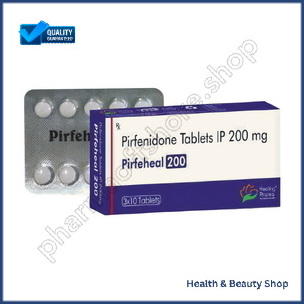
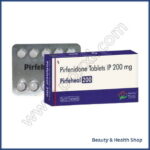
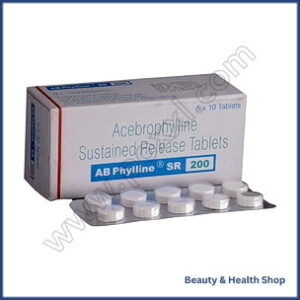
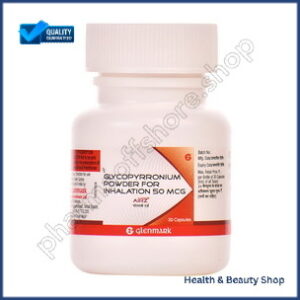
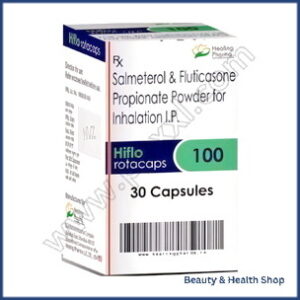
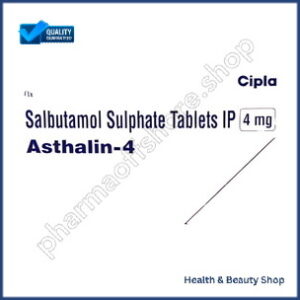
There are no reviews yet.